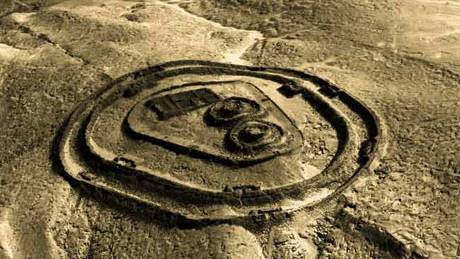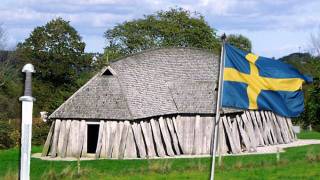Ancient Solar Observatory Discovered in Peru
Source: space.com
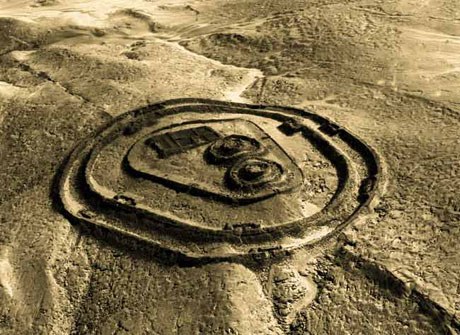 The fortified stone temple at Chankillo. Credit: National Aerial Service, Peru |
The oldest solar observatory in the Americas has been discovered in coastal Peru, archeologists announced today.
The 2,300-year-old ceremonial complex featured the Towers of Chankillo, 13 towers running north to south along a low ridge and spread across 980 feet (300 meters) to form a toothed horizon that was used for solar observations.
Researchers excavated the solar observatory between 2000 and 2003. They found buildings—in exact mirror position of each other—to the east and west of the towers with observation points for watching the Sun rise and set over the toothed horizon.
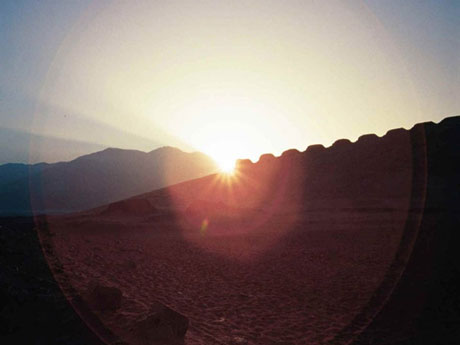 The rise of the sun between Tower 1 and Cerro Mucho Malo at the June solstice, 2003, viewed from the western solar observaotry. The sunrise position at the solstice has shifted to the right approximately 0.3° from year 300 BC. Credit: Ivan Ghezzi |
How it works
In addition to the daily east to west motion, our Sun appears to move eastward through the stars in a path known as the ecliptic over the course of a year. Also, the Earth’s axis is not perpendicular to the ecliptic but slanted by an angle of a little over 23 degrees. The combinations of these positions determine where the Sun is above our horizon day by day.
At different times of the year one can observe the Sun rise and set in different spots with respect to our horizon and for different lengths of time. For example, in the Northern Hemisphere, around the summer solstice—which falls on June 21—the Sun rises highest in the sky and stays up longer.
As viewed from the two observing points of Chankillo [image], the spread of towers along the horizon corresponds very closely to the range of movement of the rising and setting positions of the Sun over the year, the authors write in the March 2 issue of the journal Science.
Once the Sun started to move away from any of its extreme positions, like the solstices or equinoxes, the towers and gaps between them provided a means to track the progress of the Sun up and down the horizon, to within a couple of days accuracy.
“Chankillo is arguably the oldest solar calendar that can be identified as such with confidence within the Americas,” said lead study author Ivan Ghezzi from Pontificia Universidad Catolica del Peru.
Tree-ring samples dated these structures back to the fourth century B.C.
“Many indigenous American sites have been found to contain one or a few putative solar orientations,” Ghezzi said. “Chankillo, in contrast, provides a complete set of horizon markers and two unique and indisputable observation points.”
Other discoveries
At the end of a 131-foot-long corridor in the building to the west of the towers, the researchers found pottery, shells, and stone artifacts in an area possibly for commoners who participated in rituals linked to solar observations.
Previous studies showed that the Incas—South American Indians who established an empire that once ranged from northern Ecuador to central Chile from 1100 to the 1530s—had built sites to mark solar observations by 1500.
In comparison, the earliest portion of Stonehenge—megalithic ruins in southern England purported to correlate with the rising and setting of the Sun and the Moon—is said to have been completed around 3000 B.C.
The new finding, however, puts Sun cults in the Americas at an earlier date than the Incans.
“Chankillo was built approximately 1,700 years before the Incas began their expansion,” Ghezzi said. “Now we know these practices are quite a bit older and were highly developed by Chankillo’s time.”
Article from: http://space.com/scienceastronomy/070301_oldest_observatory.html
Towers point to ancient Sun cult
From: news.bbc.co.uk
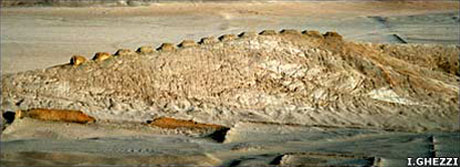 The Thirteen Towers constitute an ancient solar observatory |
The oldest solar observatory in the Americas has been found, suggesting the existence of early, sophisticated Sun cults, scientists report.
It comprises of a group of 2,300-year-old structures, known as the Thirteen Towers, which are found in the Chankillo archaeological site, Peru.
The towers span the annual rising and setting arcs of the Sun, providing a solar calendar to mark special dates.
The study is published in the journal Science.
Clive Ruggles, professor of archaeoastronomy at Leicester University, UK, said: "These towers have been known to exist for a century or so. It seems extraordinary that nobody really recognised them for what they were for so long.
 The towers have inset staircases |
The Thirteen Towers of Chankillo run from north to south along the ridge of a low hill within the site; they are relatively well-preserved and each has a pair of inset staircases leading to the summit.
The rectangular structures, between 75 and 125 square metres (807-1,345 sq ft) in size, are regularly spaced - forming a "toothed" horizon with narrow gaps at regular intervals.
About 230m (750ft) to the east and west are what scientists believe to be two observation points. From these vantages, the 300m- (1,000ft-) long spread of the towers along the horizon corresponds very closely to the rising and setting positions of the Sun over the year.
"For example," said Professor Ruggles, "if you were stood at the western observing point, you would see the Sun coming up in the morning, but where it would appear along the span of towers would depend on the time of the year."
"So, on the summer solstice, which is in December in Peru, you would see the Sun just to the right of the right-most tower; for the winter solstice, in June, you would see the Sun rise to the left of the left-most tower; and in-between, the Sun would move up and down the horizon."
This means the ancient civilisation could have regulated a calendar, he said, by keeping track of the number of days it took for the Sun to move from tower to tower.
Sun cults
The site where the towers are based is about four square kilometres (1.5 square miles) in size, and is believed to be a ceremonial centre that was occupied in the 4th Century BC. It is based at the coast of Peru in the Casma-Sechin River Basin and contains many buildings and plazas, as well as a fortified temple that has attracted much attention.
The authors of the paper, who include Professor Ivan Ghezzi of the National Institute of Culture, Peru, believe the population was an ancient Sun cult and the observatory was used to mark special days in their solar calendar.
Professor Ruggles said: "The western observing point, and to some extent, the eastern one, are very restricted - you couldn't have got more than two or three people watching from them. And all the evidence suggests that there was a formal or ceremonial approach to that point and that there were special rituals going on there.
"This implies that you have someone special - the priests perhaps - who watched the Sun rise or set, while in the plaza next door, the crowds were feasting and could see the Sun rise, but not from that special perspective.
Written records suggest the Incas were making solar observations by 1500 AD, and that their religion centred on Sun worship.
"We know that in Inca times, towers were used to observe the Sun near the solstices, which makes you speculate that there are elements of cult practice that go back a lot further," Professor Ruggles told the BBC News website.
Article from: http://news.bbc.co.uk/2/hi/science/nature/6408231.stm
